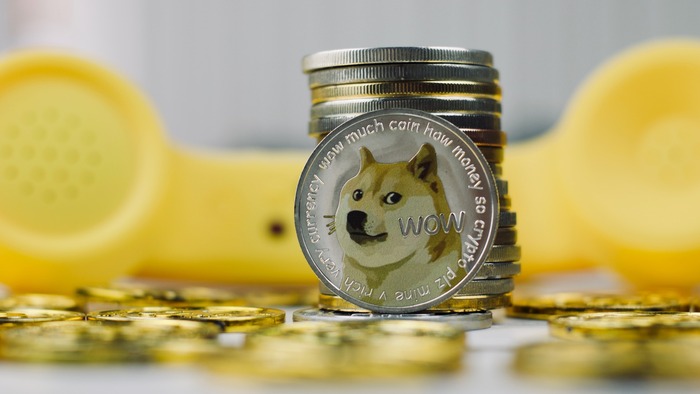This article provides a detailed exploration of the circulating supplies of Bitcoin and Dogecoin. We delve into their differences, how these influence market capitalization, and the resultant supply and demand dynamics. For those seeking immediate engagement with cryptocurrencies, investing in the gaming industry with Roblox stocks paves the way to trading platforms reserved for Bitcoin and Dogecoin.
Differences in Circulating Supply: Finite vs Infinite
The circulating supply of cryptocurrencies – how many coins are currently in possession by the general public and circulating in the market – plays a significant role in shaping their value and impact on the market. One of the starkest contrasts between Bitcoin and Dogecoin is their difference in circulating supply.
Bitcoin operates on a finite supply model. It is hardwired into Bitcoin’s very design that there will only ever be 21 million Bitcoins in existence. This was a choice made by its creator, Satoshi Nakamoto, to imbue the cryptocurrency with a scarcity that mirrors precious metals like gold. As of now, over 18.5 million Bitcoins have been mined, bringing us closer to that 21 million cap. This finite supply of Bitcoin plays a key role in driving its price and demand in the market.

On the other hand, Dogecoin represents the other end of the spectrum with an infinite supply model. This means there’s no upper limit to how much Dogecoin can be mined. Dogecoin was created as a fun, less serious alternative to Bitcoin. The choice to have an unlimited supply was a reflection of this lighthearted origin.
The differences in the circulating supply between Bitcoin and Dogecoin create unique market dynamics for each cryptocurrency. Bitcoin’s scarcity might drive its value up but also makes it less accessible for everyday transactions. In contrast, Dogecoin’s abundance could promote its use for smaller, regular transactions, but its value may remain low due to the potential for oversupply.
Impact on Market Capitalization: Bitcoin vs Dogecoin
Market capitalization, or “market cap”, is an essential metric in the cryptocurrency world. It is calculated by multiplying the current market price of a coin by its circulating supply. Given the vast differences in the circulating supplies of Bitcoin and Dogecoin, their impacts on market capitalization are distinctly contrasting.
With its finite supply, Bitcoin has been able to maintain a high market cap. As the first and most famous cryptocurrency, Bitcoin’s scarcity principle (a maximum of 21 million coins) has been a key factor in its growing value. As more people learn about Bitcoin and invest in it, demand increases, further driving up its price and, consequently, its market cap.
Dogecoin, with its infinite supply, presents a different case. Its unlimited supply could lead to a lower market price per coin, due to the potential for oversupply. However, the popularity and widespread use of Dogecoin has resulted in a sizable market cap. This means that despite its comparatively lower price per coin, the sheer volume of Dogecoins in circulation compensates, giving it a significant market cap.
Therefore, while Bitcoin and Dogecoin differ greatly in their supply models, they both have substantial impacts on their respective market caps. Bitcoin’s finite supply contributes to its high price and robust market cap, while Dogecoin’s infinite supply results in a lower price per coin but is balanced by a large circulating supply, maintaining its relevance in the market cap ranking.

Supply and Demand Dynamics: A Comparative Study
Supply and demand dynamics are fundamental to understanding the value proposition and market behavior of any asset, cryptocurrencies included. When it comes to Bitcoin and Dogecoin, their disparate approaches to circulating supply give rise to very different supply-demand dynamics.
Bitcoin, with its finite supply, follows a model similar to that of gold. This characteristic induces a scarcity effect which makes Bitcoin more desirable, as each coin becomes a limited resource. As the number of available Bitcoins reduces due to the approaching cap of 21 million, the demand may potentially increase, thus raising the price. This has led many investors to perceive Bitcoin as “digital gold”, a valuable asset to hold for the long term, which has further amplified its demand and value.
On the contrary, Dogecoin’s supply model, characterized by an infinite number of coins, creates a contrasting dynamic. There is no imminent fear of Dogecoin running out, which can lead to less urgency in its acquisition. Consequently, Dogecoin’s value tends not to be driven by scarcity, but rather by its popularity and usability. If the demand for Dogecoin grows faster than its continuously increasing supply, its price can rise. However, if the supply grows faster than the demand, the price may decrease.
Conclusion
The circulating supplies of Bitcoin and Dogecoin play pivotal roles in shaping their market dynamics and value. As we navigate the complex world of cryptocurrencies, understanding these factors can offer valuable insights for potential investors and crypto enthusiasts alike.